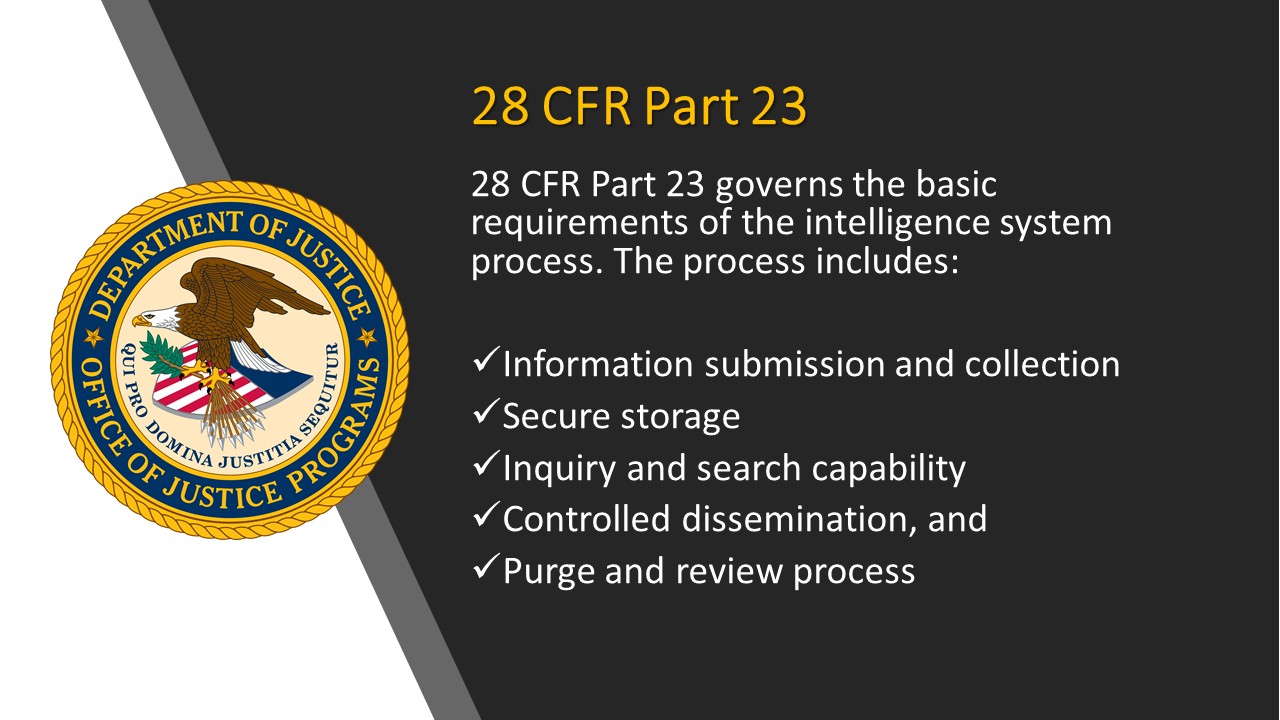Criminal intelligence analysts provide a key element of effective law enforcement, at both the tactical and strategic levels. Analysts study information related to suspects, trends, known criminals, and more. Through a process of gathering evaluating this information, trained intelligence analysts identify associations across various illegal activities over many locations.
 Government decisions and policies are heavily influenced by the insights provided by the criminal intelligence analyst, and police investigations use the intelligence in support of their missions. To that end, the main functions of criminal intelligence analysts include:
Government decisions and policies are heavily influenced by the insights provided by the criminal intelligence analyst, and police investigations use the intelligence in support of their missions. To that end, the main functions of criminal intelligence analysts include:
- Supporting law enforcement activities and large-scale investigations
- Providing an ongoing analysis of potential threats to public safety
- Helping senior officials and policy makers to deal with ever-evolving challenges and uncertainty
There are both tactical and strategic elements to the role of the criminal intelligence analyst. These categories differ with respect to the minutia of details, and the ‘customer’ or end-user of the intelligence.
A. Tactical Criminal Intelligence
Criminal intelligence of a tactical nature attempts to achieve a specific outcome related to law enforcement. Perhaps a disruption of organized criminal groups, a search warrant, seizure of assets, or an arrest.
Tactical criminal intelligence includes:
- The identification of potential connections between people, places, and other entities of interest… and their potential involvement in unlawful activities;
- Recognizing and reporting important gaps in intelligence data;
- Designing and creating detailed dossiers of suspected or confirmed criminals.
 B. Strategic Criminal Intelligence
B. Strategic Criminal Intelligence
Strategic analysis of criminal intelligence is expected to continuously educate policy makers and senior officials about current and evolving criminal activities and patterns. The benefits of strategic analysis tend to be realized over a longer period of time than does tactical analysis.
Emerging criminal trends and activities sit at the core of strategic intelligence analysis. The intelligence can provide advanced warning of potential threats, and can provide law enforcement officials with the information required to prepare their agencies for emerging illegal actions.
Strategic criminal intelligence analysis includes the recognition and documentation of:
- Evolving trends and patterns of illegal activities
- Developing threats
- Modus operandi
- The possible effect of demographics, technologies, and evolving socio-economic factors on criminal activities
 D. Abuse and Misuse of Criminal Intelligence
D. Abuse and Misuse of Criminal Intelligence
The misuse and/or improper storage and unauthorized access to sensitive criminal intelligence data has always been a concern of civil liberty advocates, and has recently been brought to light again with stories regarding misuse of California’s CalGang database. Given the diverse and growing requirements of criminal intelligence management, certain best-practices and policies have evolved in order to help law enforcement agencies collect, store, and disseminate this important criminal intelligence without invading individual rights to privacy.
E. Best Practices for Criminal Intelligence Management
 Specifically, 28 CFR Part 23 is a federal regulation that provides guidance to law enforcement agencies on the standards for implementing and operating federally funded criminal intelligence systems that cross jurisdictions. The protection of individual constitutional rights and civil liberties sits at the core of 28 CFR Part 23. Every American, of course, is afforded a reasonable expectation of privacy. The guidelines outline specific methods to gather, store, disseminate, review, and purge criminal intelligence data.
Specifically, 28 CFR Part 23 is a federal regulation that provides guidance to law enforcement agencies on the standards for implementing and operating federally funded criminal intelligence systems that cross jurisdictions. The protection of individual constitutional rights and civil liberties sits at the core of 28 CFR Part 23. Every American, of course, is afforded a reasonable expectation of privacy. The guidelines outline specific methods to gather, store, disseminate, review, and purge criminal intelligence data.
Recommending the use of these guidelines is The National Criminal Intelligence Sharing Plan (NCISP). NCISP suggests that the regulations ensure that the operations of a criminal intelligence system protect the rights and privacy of individuals and organizations. Importantly, The NCISP suggests that criminal intelligence groups adhere to 28 CFR Part 23, irrespective of whether or not the system was implemented using federal funds and grants.
The criminal intelligence guidelines prescribed by 28 CFR Part 23 have been identified as the minimal policies and rules for sharing data across law enforcement agencies.

The best practices prescribed within the regulation include specific guidelines related to:
- Proper procedures for querying, reviewing, sharing, validating, and purging of criminal intelligence data.
- Multi-jurisdictional memorandums and participation agreements (if applicable).
- The gathering and submission of criminal intelligence information.
- The definition of key criminal intelligence terminology, including ‘the right to know’ and ‘the need to know’.
- The specific activities that may or may not be maintained within the criminal intelligence system.
- Individual rights to access the criminal intelligence systems.
- Security requirements including the auditing and inspection of data.
F. An Excellent Solution
 IntelNexus™ from software developer Crime Tech Solutions is an affordable, yet powerful criminal intelligence management system that complies with the regulations and best practices set forth in 28 CFR Part 23. Whether or not an agency (or agencies) absolutely require compliance to 28 CFR Part 23, the software lays out a framework and enforces the principles that should be incorporated into the criminal intelligence database. IntelNexus offers the foundation for gathering, storing, maintaining, sharing, authenticating, and purging criminal intelligence while ensuring the privacy and civil rights afforded to us all.
IntelNexus™ from software developer Crime Tech Solutions is an affordable, yet powerful criminal intelligence management system that complies with the regulations and best practices set forth in 28 CFR Part 23. Whether or not an agency (or agencies) absolutely require compliance to 28 CFR Part 23, the software lays out a framework and enforces the principles that should be incorporated into the criminal intelligence database. IntelNexus offers the foundation for gathering, storing, maintaining, sharing, authenticating, and purging criminal intelligence while ensuring the privacy and civil rights afforded to us all.
The company also develops the popular Case Closed™ investigation case management software, and provides a suite of advanced crime analytics and link analysis software.

 Here is another great reason why it is important for agencies to follow best practices in intelligence data management. The regulations behind DOJ 28 CFR Part 23 are meant to help agencies walk the line between effective intelligence gathering and the right to an individual’s privacy.
Here is another great reason why it is important for agencies to follow best practices in intelligence data management. The regulations behind DOJ 28 CFR Part 23 are meant to help agencies walk the line between effective intelligence gathering and the right to an individual’s privacy.